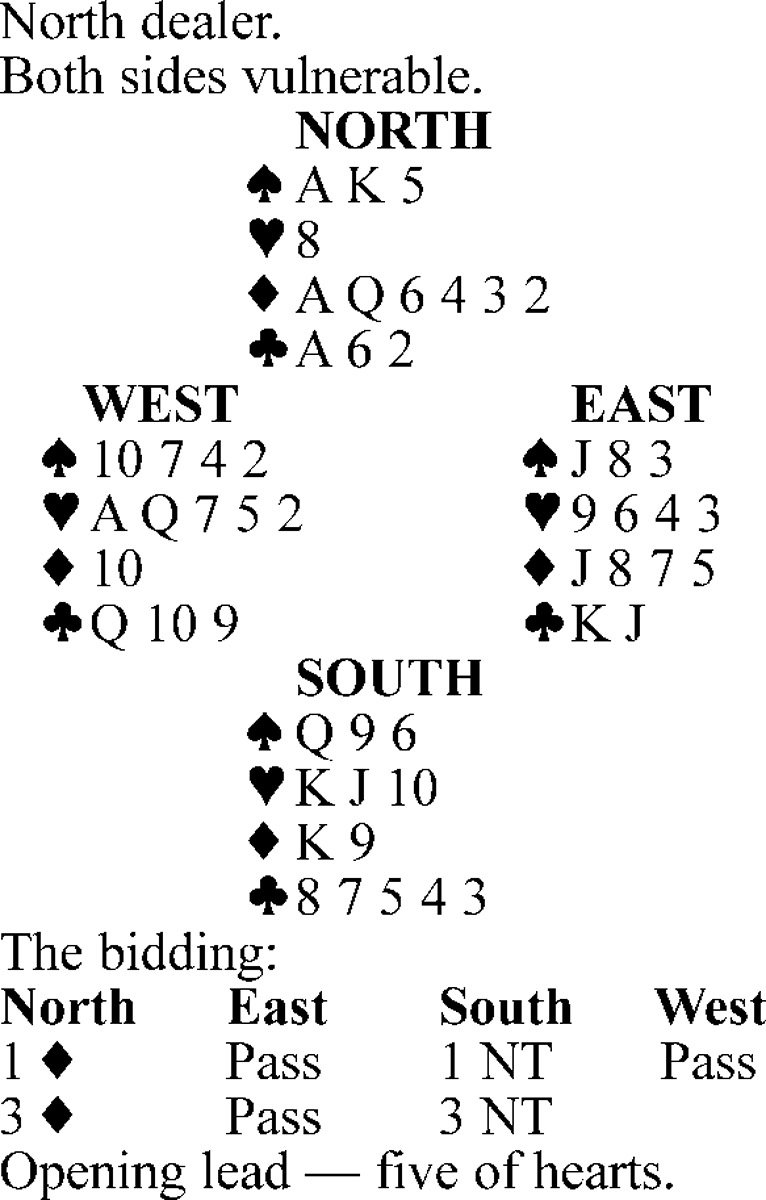Let's say that you're declarer in a given hand and that if you adopt a certain line of play, you'll be a strong favorite to make your contract. And let's assume that if you adopt a different line of play, you can become an even bigger favorite. Naturally, you'll be better off in the long run if you choose the line of play that offers the greater chance of success.
That's pretty much the situation in the accompanying deal after you win West's heart lead with the jack. It's tempting to tackle the diamonds at once by playing first the king and then the ace, hoping the opposing diamonds are divided 3-2. But if you did that in the actual case, you'd go down one, assuming best defense.
Now let's say you're the type of player who worries from the start that the diamonds might be divided 4-1 instead of 3-2, and that East might have the four diamonds. In that event, you could take steps to try to overcome the imagined 4-1 division. You would do this by leading a low spade to dummy's king at trick two, followed by a low diamond toward your K-9.
After East plays low, you'd finesse the nine! You wouldn't expect to win the trick, but you'd nevertheless be confident that nothing whatever could stop you from making at least nine tricks. As it happens, the nine would lose to West's ten, but regardless of what he did next, you'd be certain to make at least four notrump.
In the actual deal, the safety play in diamonds assures the contract. It might have proven futile (if East had held the J-10-x-x of diamonds and put up the ten on the first lead from dummy), or it might have cost you a trick if the diamonds were divided 3-2, but it is nevertheless the right way to play the hand.
(c) 2015 King Features Synd., Inc.
General News on 01/28/2015
